5 Steps to Correctly Evaluate Symmetrical Positions
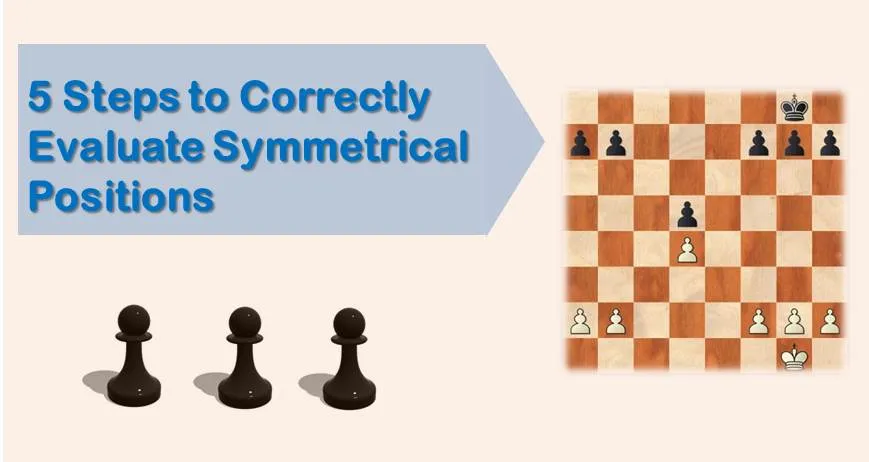
The correct evaluation of the positions arising in the middle game is one of the most difficult things to do for any chess player. From beginners to masters, this particular subject is always a heavy task. It takes a good understanding of the main positional concepts, a well-trained instinct, and of course calculation skills.
In many books dedicated to the middlegame study, the authors have tried listing every element a player should take into consideration in order to correctly evaluate his position and find the most suitable plan given the situation. A standard list would be like this:
- Material (which side has more material, and what compensation there is, in case of unbalance)
- Pawn structure (weak pawns, pawn chains, pawn islands)
- Weak squares (weak squares in the position, outposts for our own pieces)
- Piece coordination (Piece activity of each side)
- Position of the kings (King safety, which side would be more exposed to an attack)
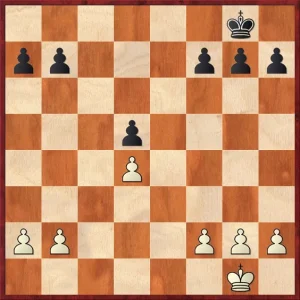
Those are only the main elements and they tend to work very well. However, not every position is the same, therefore the same rules cannot be applied. In quiet, strategical positions it is easy to employ the above mentioned list, but in wild positions where threats come and go, a player should make use of his calculation skills and trust his own instinct.
In other words, why worry about things like pawn structure or weak squares when our own piece activity or our opponent’s is the predominant element in the position? There is also a third type of positions: the so-called symmetrical positions. How to evaluate a position in which our opponent’s structure is no different from our own?
The answer is we should consider the piece disposition, as it is the element capable of creating the unbalance.
Understanding the symmetrical structures is just as important as everything else. Very often, the less experienced players think that after an exchange variation in the Slav or in the French Defense, the draw is already guaranteed, failing to realize the small edge one side can have, enough to press for a win.
Symmetrical structures often arise from the English Opening, Slav Defense, French Defense and Caro Kann Defense, so it’s very important to understand them.
Tip
If you want to improve your positional chess and start converting more middlegames into wins, you should give a try to our training course which covers most important middlegame positions in a step-by-step easy to follow and understand way.
Examples of symmetrical structures
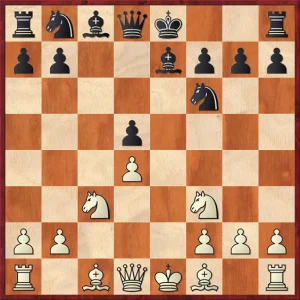
Milov – Kobalia, White To Play
In the position above the pawn structure is completely equal, but black has not yet equalized. A closer look will reveal that after white develops his bishop from f1 to d3, plays h3 and bishop to f4, his pieces will be far more active than black’s. Black will have to settle for the passive position of his bishops on e6 and e7, where they stand well from a defensive point of view, but do not exert any pressure on white’s position.
The following game is very instructive.
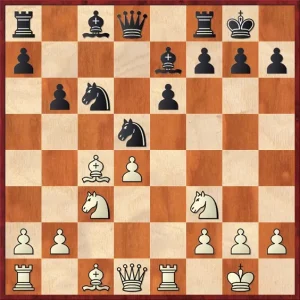
Botvinnik – Alekhine, White to Play
Black has just played the move 10…b6, to which white replied with 11.Nxd5! followed by 12.Bb5 with a steady edge. White will continue with Bf4, Qa4 etc with a lasting pressure.
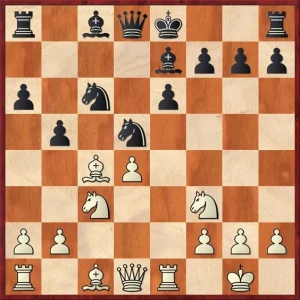
Botvinnik – Khavin, White to Play
In a position similar to the previous diagram, Botvinnik applies the same pattern: capturing on d5 in order to exploit the weakened c5 square. Here, the two knights are stronger than black’s knight and bishop.
We hope you have learned from this article that symmetrical positions are not always as safe as they look and both sides should play carefully in order not to give the opponent a nagging edge. We can also conclude that the side that moves first may have a certain advantage, as he can create the threat, forcing the opponent to adopt a defensive position.
If you want to improve your chess level, you need to have a clear study plan. If you aim for a dramatic improvement at chess you need to work on all of the elements of the game in a systematic way:
- tactics
- positional play
- attacking skills
- endgame technique
- classical games analysis
- psychological preparation
- and much more
That seems to be like a lot of things, and that is. But no worries, we have made it easy for you. Our comprehensive training course covers it all and much more. Sign up for 21 Day Training right now!




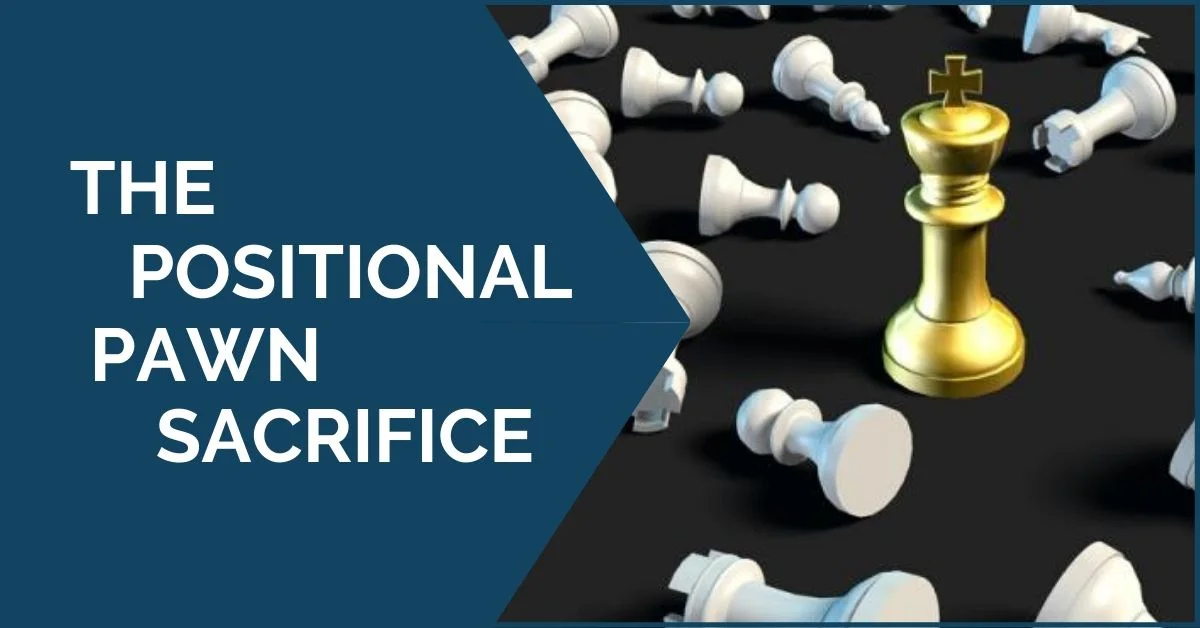
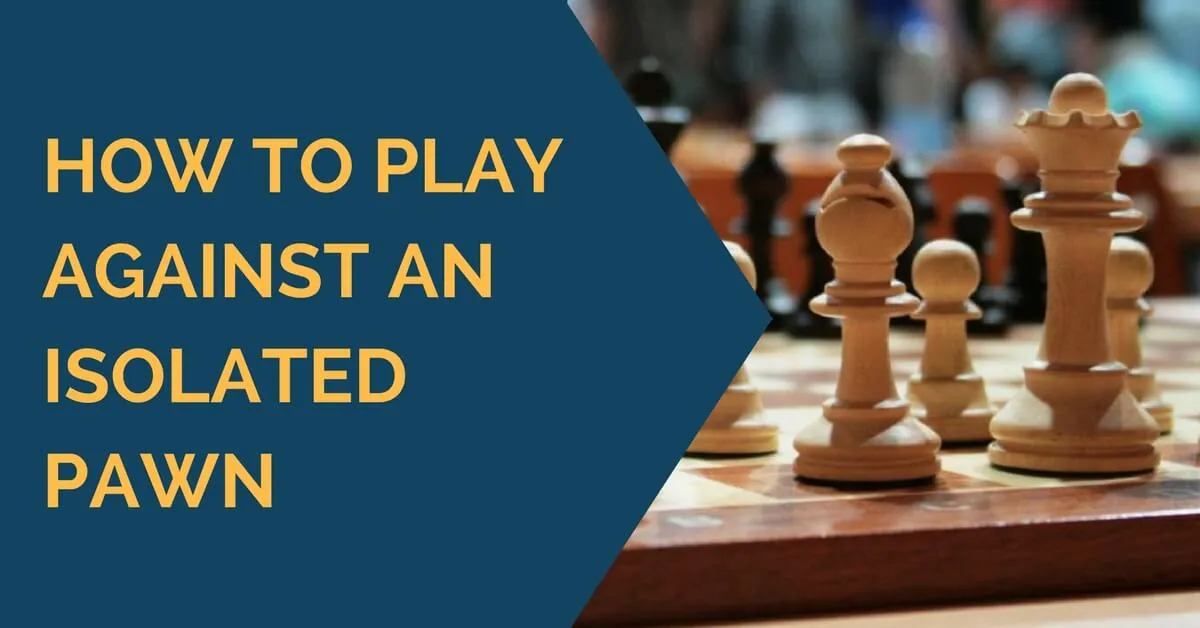




Comments: